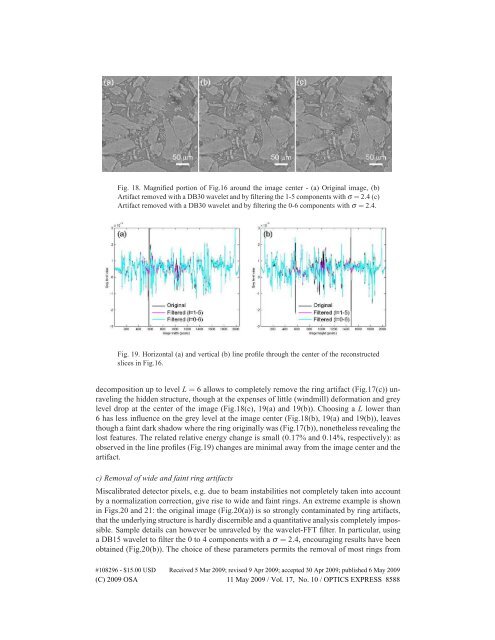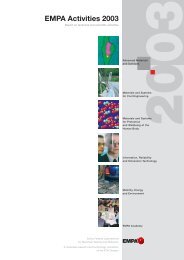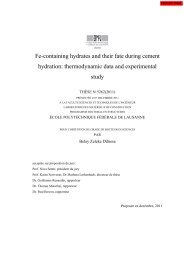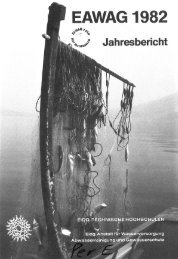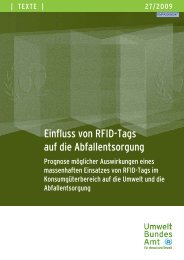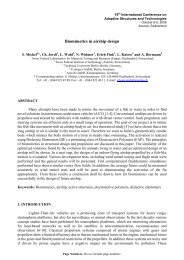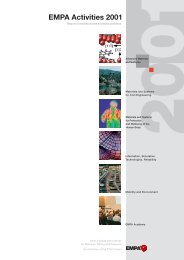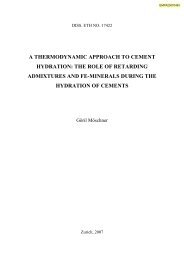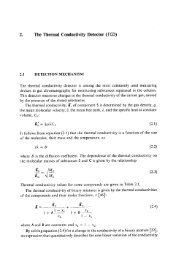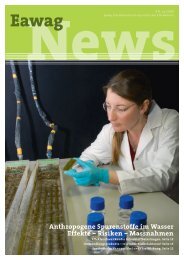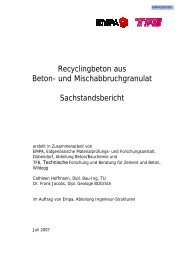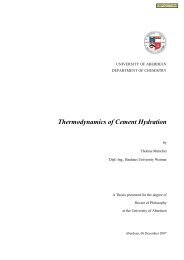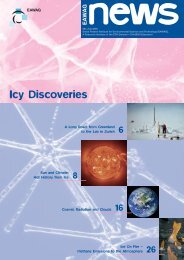Stripe and ring artifact removal with combined wavelet — Fourier ...
Stripe and ring artifact removal with combined wavelet — Fourier ...
Stripe and ring artifact removal with combined wavelet — Fourier ...
You also want an ePaper? Increase the reach of your titles
YUMPU automatically turns print PDFs into web optimized ePapers that Google loves.
Fig. 18. Magnified portion of Fig.16 around the image center - (a) Original image, (b)<br />
Artifact removed <strong>with</strong> a DB30 <strong>wavelet</strong> <strong>and</strong> by filte<strong>ring</strong> the 1-5 components <strong>with</strong> σ = 2.4 (c)<br />
Artifact removed <strong>with</strong> a DB30 <strong>wavelet</strong> <strong>and</strong> by filte<strong>ring</strong> the 0-6 components <strong>with</strong> σ = 2.4.<br />
Fig. 19. Horizontal (a) <strong>and</strong> vertical (b) line profile through the center of the reconstructed<br />
slices in Fig.16.<br />
decomposition up to level L = 6 allows to completely remove the <strong>ring</strong> <strong>artifact</strong> (Fig.17(c)) unraveling<br />
the hidden structure, though at the expenses of little (windmill) deformation <strong>and</strong> grey<br />
level drop at the center of the image (Fig.18(c), 19(a) <strong>and</strong> 19(b)). Choosing a L lower than<br />
6 has less influence on the grey level at the image center (Fig.18(b), 19(a) <strong>and</strong> 19(b)), leaves<br />
though a faint dark shadow where the <strong>ring</strong> originally was (Fig.17(b)), nonetheless revealing the<br />
lost features. The related relative energy change is small (0.17% <strong>and</strong> 0.14%, respectively): as<br />
observed in the line profiles (Fig.19) changes are minimal away from the image center <strong>and</strong> the<br />
<strong>artifact</strong>.<br />
c) Removal of wide <strong>and</strong> faint <strong>ring</strong> <strong>artifact</strong>s<br />
Miscalibrated detector pixels, e.g. due to beam instabilities not completely taken into account<br />
by a normalization correction, give rise to wide <strong>and</strong> faint <strong>ring</strong>s. An extreme example is shown<br />
in Figs.20 <strong>and</strong> 21: the original image (Fig.20(a)) is so strongly contaminated by <strong>ring</strong> <strong>artifact</strong>s,<br />
that the underlying structure is hardly discernible <strong>and</strong> a quantitative analysis completely impossible.<br />
Sample details can however be unraveled by the <strong>wavelet</strong>-FFT filter. In particular, using<br />
a DB15 <strong>wavelet</strong> to filter the 0 to 4 components <strong>with</strong> a σ = 2.4, encouraging results have been<br />
obtained (Fig.20(b)). The choice of these parameters permits the <strong>removal</strong> of most <strong>ring</strong>s from<br />
#108296 - $15.00 USD Received 5 Mar 2009; revised 9 Apr 2009; accepted 30 Apr 2009; published 6 May 2009<br />
(C) 2009 OSA 11 May 2009 / Vol. 17, No. 10 / OPTICS EXPRESS 8588


